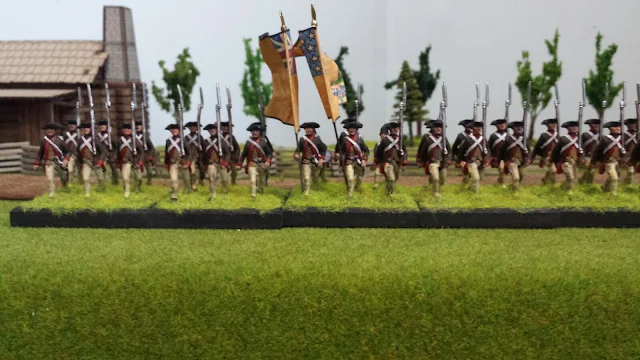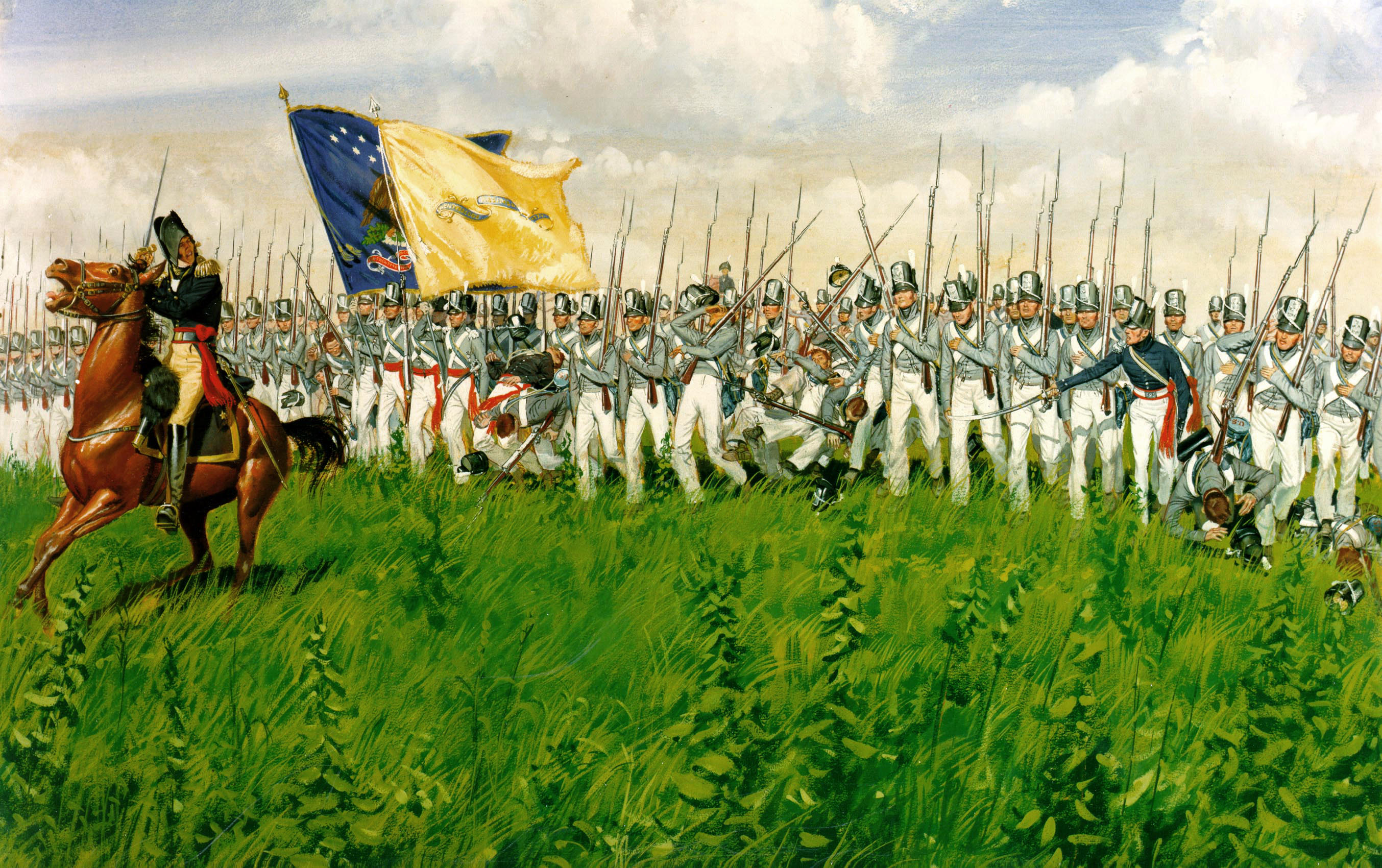I have walked a number of battlefields. Some memorable, others very forgettable. This one is very special to me. It is very easy to imagine regiments marching across the fields here and even smell the black powder. The field is small in comparison to such places as Gettysburg. But as there is very little development, and what there is is screened by trees, it appears much bigger. When I first stopped here in August 1985 there was only a single marker off the road. Now there are walking paths and very good interpretive signage.
The Battle of Chippawa was small in terms of the number of regiments. The main fight on the "plain" was between three regular infantry battalions and an artillery battery on each side. In the woods, militia, volunteers and Native Americans fought out a very different battle. To me that is what makes it tactically intriguing. It is easily imagined, easily understood because it is a smaller "playing field." There are regulars facing off, the power of artillery and a deadly game of hide-and-seek in the woods.
And it is the stuff of legend. General Winfield Scott had incurred the ire of The American War Department. In consequence The War Department decided to send grey uniforms instead of the regulation blue uniforms. The grey uniforms caused a short term case of mistaken identity by the British who assumed they were militia and anticipated an easy victory. Observing the maneuvers as the troops advanced while under fire caused the British commander to exclaim, "Those are regulars, by God!" Because of the American victory here West Point cadets wear grey today to honour this battle. The stuff of legend!
 |
| Looking from American Artillery position near Ussher house towards British line. |
 |
| Always important to know where you are! |
 |
| Wood in distance was sure if fight between militia and Native Americans. |
 |
| Looking towards Niagara river. Site of Ussher farm house and lane. |
 |
| Scott deployed his brigade along this lane from here to wood line in distance. |
 |
| Same view as above but in 1814 |
Today there is a marked entrance to the battlefield with a welcoming sign. Plenty of parking spaces for buses and cars. From the parking lot there is a short walk either across the field to the interpretation signage or along the river road past the old marker I saw in 1985. The interpretive signage is set up along what would have been a farm lane in 1814 running from the river road, past the Ussher farm and towards the woods. This is where is American 1st Brigade under Winfield Scott deployed into line. Across the field in front of you was where the British line deployed. Here in the actual field you notice that while there is plenty of room for Scott to deploy his artillery and three battalions in line, his British counterpart has room to deploy only two battalions and artillery, with his third battalion in reserve. One of the advantages of actually visiting a battlefield is that you can understand clearly how things happened. Looking towards the woods you appreciate how much room they needed to maneuver battalions even on this small scale. The interpretive signs should be read from left to right and do a very good job of setting the stage of why this battle was fought and then how it was fought.
 |
| With maps and books in hand I follow the course of the battle. |
 |
| Pointing towards Street's Creek where Scott's brigade crossed and then deployed into line. |
 |
| How they would have looked. |
In the center of the field, just behind the signage is a memorial cairn which has memorial tablets to all sides who fought here. British/Canadian and American regiments and batteries are listed, and there is a memorial tablet to the Native Americans who fought on both sides. Lastly a tablet that mentions that since this "unpleasantness" America and Canada have enjoyed over two hundred years of peace as neighbors. That is a nice thought to take with you as you leave.
Thank you to my wife Janine for visiting this battlefield in both 1985 (during our honeymoon), again in 2018, and for editing this posting.


































